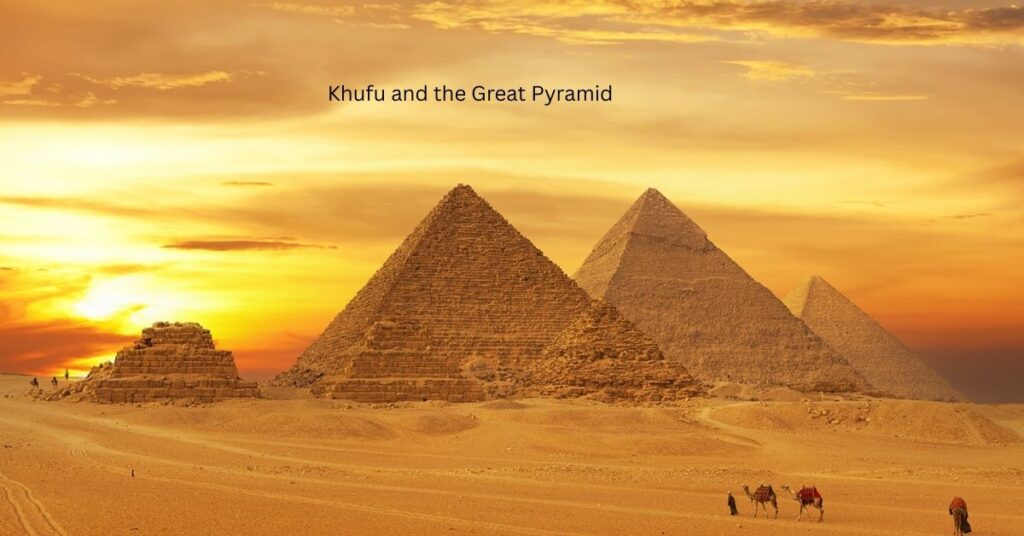The history of ancient Egypt is filled with remarkable achievements, but few are as awe-inspiring as the Great Pyramid of Giza. At the heart of this monumental structure stands the legacy of Pharaoh Khufu, the ruler who envisioned and commissioned one of the greatest wonders of the ancient world. Both a symbol of power and a feat of engineering brilliance, the Great Pyramid continues to capture the imagination of historians, architects, and travelers alike.
Who Was Khufu?
Khufu, also known by his Greek name Cheops, was the second pharaoh of Egypt’s Fourth Dynasty during the Old Kingdom period, around 2580–2560 BCE. Although little is known about his personal life, Khufu is remembered primarily for his monumental building projects, especially the Great Pyramid at Giza. Ancient accounts, particularly those by Greek historians like Herodotus, paint varying pictures of him—ranging from a wise and powerful leader to a stern ruler.
Regardless of these interpretations, Khufu’s reign is most famously associated with an unparalleled architectural legacy that cemented his place in history.
The Great Pyramid of Giza
The Great Pyramid is the largest of the three pyramids on the Giza Plateau and the only surviving wonder of the Seven Wonders of the Ancient World. Originally standing at approximately 146.6 meters (481 feet), it remained the tallest man-made structure in the world for over 3,800 years. Today, despite erosion and the loss of its smooth outer casing, it still towers at around 138 meters.
Constructed using an estimated 2.3 million limestone and granite blocks, some weighing as much as 80 tons, the pyramid’s scale and precision continue to baffle engineers. The alignment with the cardinal points and the sophisticated internal chambers showcase the advanced knowledge and skill of ancient Egyptian builders.
Purpose and Symbolism
The Great Pyramid was designed as a tomb for Pharaoh Khufu. In Egyptian belief, pyramids served as gateways for kings to ascend to the afterlife, ensuring their eternal rule alongside the gods. The pyramid’s grandeur symbolized Khufu’s divine authority, immense power, and vision for eternity.
It also reflected the Egyptians’ deep understanding of religion, astronomy, and mathematics, blending spiritual significance with scientific mastery.
Construction Techniques: A Mystery Unsolved
One of the most enduring questions surrounding the Great Pyramid is how it was built. Ancient builders did not leave behind detailed records of their methods. However, modern theories suggest a combination of ramps, levers, and manpower involving tens of thousands of workers.
Recent discoveries, such as ancient papyri found at Wadi al-Jarf describing the transportation of limestone blocks, provide new insights into the logistics behind the project. Yet, the precise techniques remain a subject of debate and fascination.
Khufu’s Legacy
While little of Khufu’s reign outside the pyramid is well-documented, his enduring legacy lies in the monument that bears his name. The Great Pyramid not only immortalized him but also stands as a testament to human ingenuity and determination.
Today, millions of tourists visit Giza annually to witness this marvel. Archaeologists, engineers, and historians continue to study it, uncovering new details about ancient Egyptian civilization.
Conclusion
Khufu and the Great Pyramid represent a timeless chapter in human history. More than just a tomb, the Great Pyramid is a symbol of ambition, power, and ingenuity. It reflects not only the grandeur of Pharaoh Khufu’s vision but also the skill and dedication of the thousands who worked to bring it to life.
Even after 4,500 years, the Great Pyramid of Giza remains a mystery, a masterpiece, and a monument to one of Egypt’s most iconic rulers—Khufu.





